We arrive in the late afternoon in the New-Zealand capital. No time to visit a museum such as Te Papa - the museum of the Maori history. After these several hours spending in the car, we prefer to go for a urban walking. The athmosphere is more relaxed than in Auckland with numerous pedestrians streets and a hill in the middle of the city that offers you to rest after a day of work or transport. That's the perfect place to have a view from above over the city and its harbour.
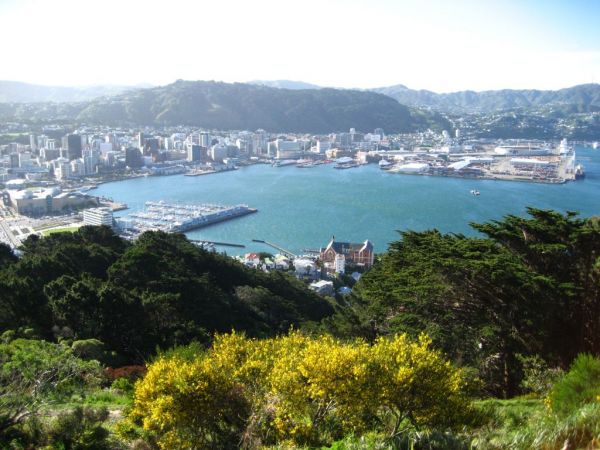



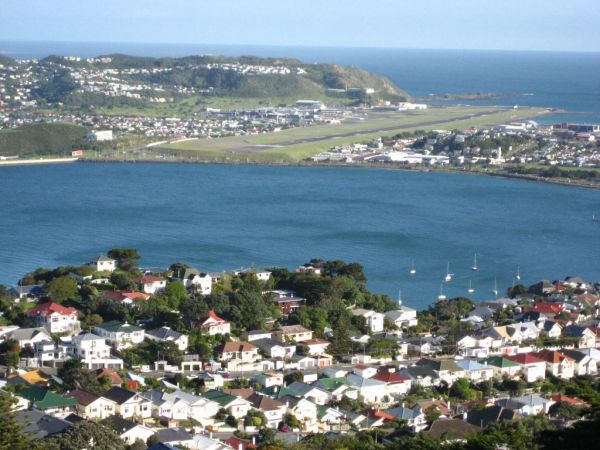


The guesthouse where we reside belongs to the YHA (youth hostelling association) and it is recognizable with its logo Hostelling International : a blue triangle with a house and a white Christmas tree. With 312 beds, it's a factory! However, the atmosphere is nice even if we stay only one night.
The next day, we take the ferry to the southern island. It likens to the ferry to go to Corsica, the vehicles embark on the lower decks and then, the passengers get to the upper decks for the 3-hour journey. From the upper deck, the rugged coast scrolls. A calm crossing on a flat water.

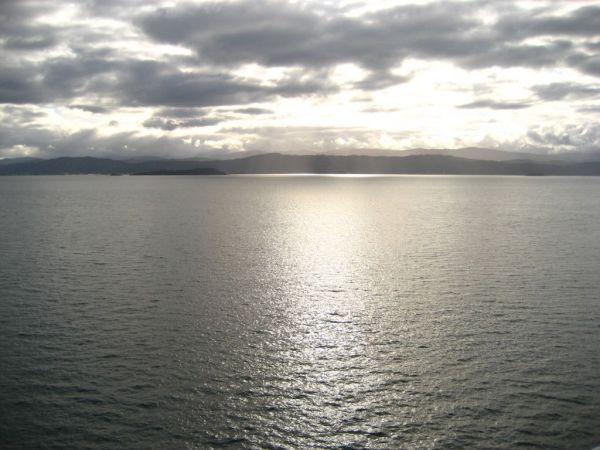
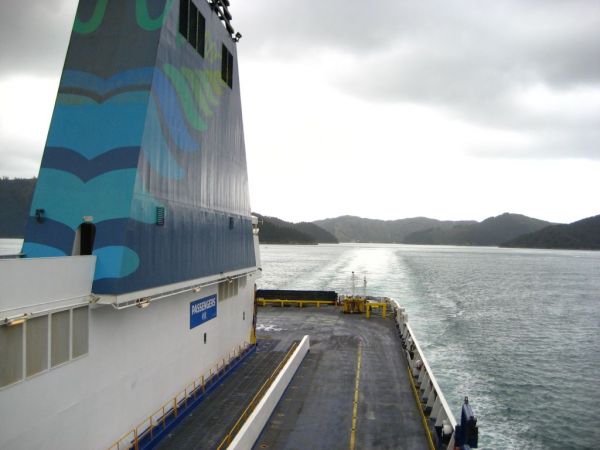
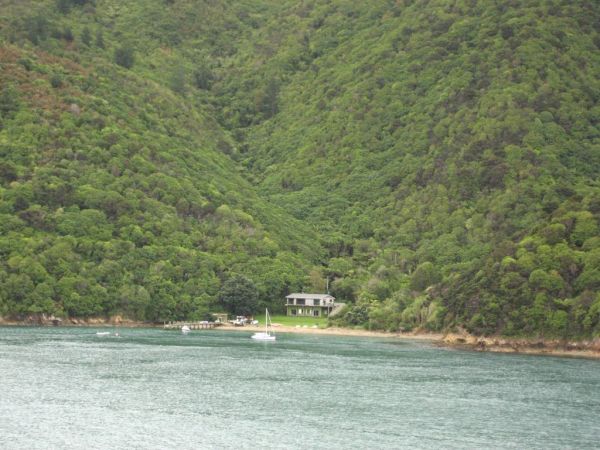



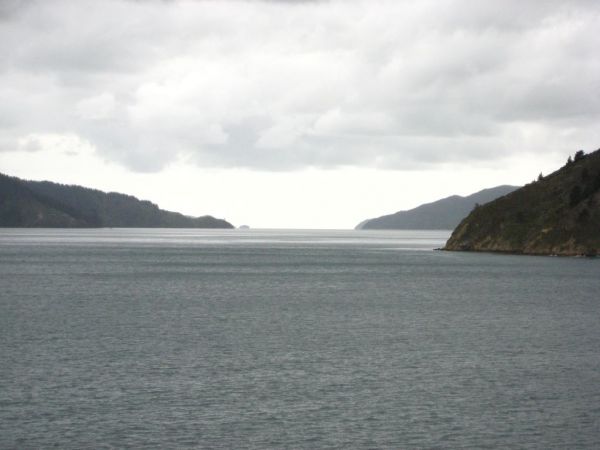

When we arrive, we take back the car to go to Motuekau. Tomorrow, we'll do our first New-Zealand trek with a night in the tent within the Abel Tasman park.
Keyword - at the kiwis country -
Tuesday 6 November 2007
Wellington and the ferry to the southern island
By dorian on Tuesday 6 November 2007, 19:15 - RTW-New Zealand
Sunday 4 November 2007
In another world at Rotorua
By dorian on Sunday 4 November 2007, 19:10 - RTW-New Zealand
In the traveller's life, the transition stages are numerous, a few moments of doubt are quickly driven away by times of intense emotions that remind us how privileged we are to be here. I never wondered before what would be the sensation to walk in another world. Now, I know.
Our first contact with this other planet goes through Te Puia. One of the 5 places in the world where it's possible to see natural geysers (the others are located in Iceland, in Kamtchaka (Russia), in the Yosemite park (USA) and in El Tatio (Chile)). The limestone plateau is swollen with 2 bulges. Chimneys that the subterranean pressure can be released through. But sometimes, as it's the case here, the outlet of the gases comes with a gush of water. The 10-meter-high main geyser gets all the looks and surrounds itself with steam. A natural wonder that regularly gushes out from the ground.
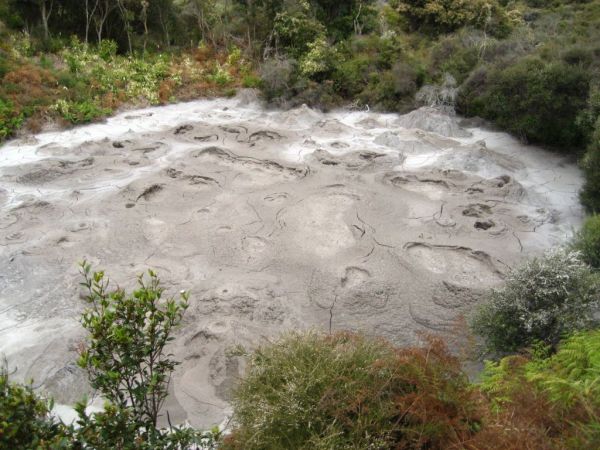











The next day, we head for the thermal wonder of Wai-o-Tapu. A brief stop at the geyser that precisely triggers at 10h15 every day. How is it possible ? Actually, the geyser doesn't have a natural activation and the park's employee dips a piece of soap into the chimney and starts the geyser. Everybody is quietly sitting and looks at the show, dumbstruck.






We go back to the Wai-o-Tapu park. The mixing of an important subterranean activity and a sustained acidic action gives an eerie atmosphere to this part of the world. Gaseous fumes which put up science-fiction scenery of a remote planet. The bowels of the earth spit its venom out, as a warning. And despite the hostility of the different suppurating injuries of the earth, that nature is weirdly beautiful. The colours perfectly match, the guttural sonorities of the silica mouths are diabolically appealing and the smoky evaporations smoothly wrap anybody that approaches it.
Here we are in this dangerously attractive world we swallow through all our senses. This kind of world we can't or don't want to leave. Intoxicated and pleased with that.
To understand the profusion of colours that emanates from the ground, a glossary gives the link between the colour and the chemical element. So, yellow corresponds to the sulphur, orange points out traces of antimony, white is similar to the silica, dark red is reserved for ferrous oxide, black expresses the presence of graphite or a carbon/sulphur mixture, purple symbolizes the manganese and light green shows the arsenic, and greener it is, more arsenic there is!
Listing all these chemical elements, we understand the area of Wai-o-Tapu concentrates a peculiar and inhospitable geothermal activity. Here, the different spots are calling the devil's house, the sulphur grottoe, the thunder crater, the devil's bath or the hell crater.
A few grottoes let a blackish liquid get out ; on the ground, small puddles of seething sulphur, the orange-edged champagne pool throws up a large steam cloud which, according to the wind, surrounds you and let you puzzled about the breathed residues.
I stop talking, let's go for the colours and smokes fireworks, let you delight in the eerie landscapes of Wai-o-Tapu.










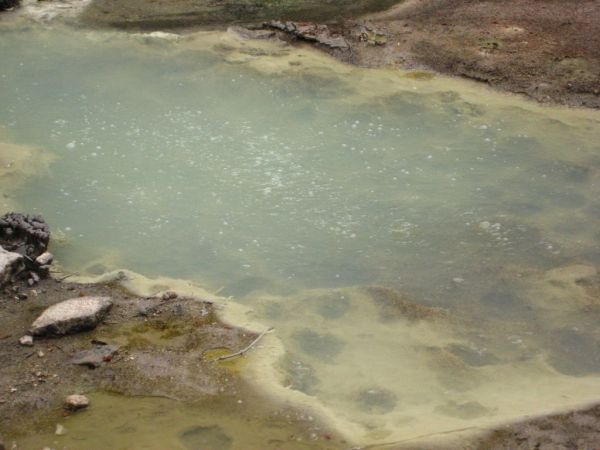










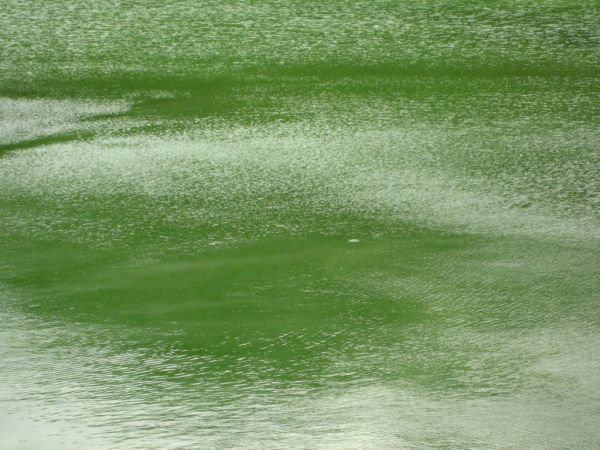











The highlight of the show : champagne's pool.





















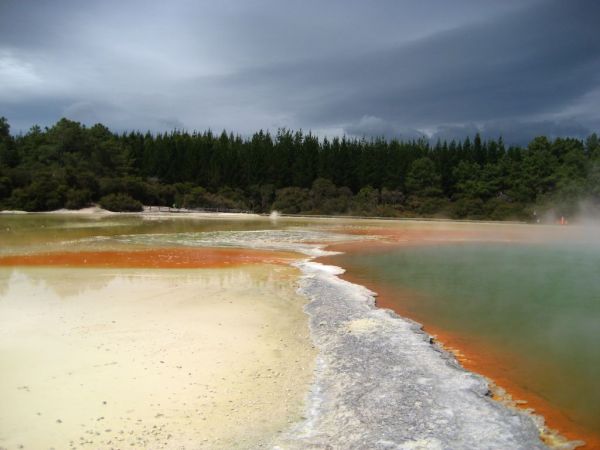

Friday 2 November 2007
The glowworms caves
By dorian on Friday 2 November 2007, 19:07 - RTW-New Zealand
We leave Auckland to drive on the New Zealand roads. Our first observation is New Zealand looks a lot like Ireland. Vast green meadows, sheep (10 times more than people) and despite the unpredictable weather, a deep desire of freedom. The DOC (department of conservation) signs inform about all the activities that flank the road. A few short strolls interrupt the long periods when the tarmac ribbon unreels. Our first contact with the local nature let us foresee a great time for the trip.










At the end of the afternoon, we arrive in Waitomo where we spend the evening and the night.
The next day, in the morning, we go to the grottoes. After the long explanation about the geological reason of the grottoes, we get on a small boat and the gondolier begins to pull the raft ahead into the darkness of the abyss. When the night is total, our looks cling to the ceiling where swarms of glowworms hang from. They use emissions of greenish light to appeal the aquatic insects of the underground river. The upper part of the grottoe liken to a starry sky where the luminous insects took the place of the stars constellations. We wonder at the strangeness of the nature. Photographies are unfortunately forbidden in order not to disturb the delicate balance of this underground fauna.
« previous entries - page 6 of 7 - next entries »





 visits
visits